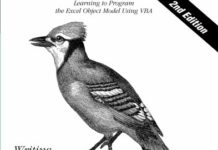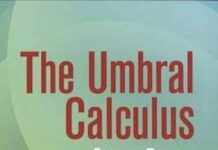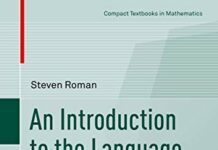
Ebook Info
- Published: 2002
- Number of pages: 448 pages
- Format: PDF
- File Size: 2.27 MB
- Authors: Steven Roman
Description
Access Database Design & Programming takes you behind the details of the Access interface, focusing on the general knowledge necessary for Access power users or developers to create effective database applications. When using software products with graphical interfaces, we frequently focus so much on the interface that we forget about the general concepts that allow us to understand and use the software effectively. In particular, this book focuses on three areas:Database design. The book provides an enjoyable, informative overview of database design that carefully shows you how to normalize tables to eliminate redundancy without losing data.Queries. The book examines multi-table queries (i.e.,various types of joins) and shows how to implement them indirectly by using the Access interface or directly by using Access SQL.Programming. The book examines the VBA integrated development environment (IDE). It then goes on to provide an excellent introduction to Data Access Objects (DAO), ActiveX Data Objects (ADO), and ADO Extensions for Data Definition and Security (ADOX). These sections serve as a handy introduction and primer for basic database operations,such as modifying a table under program control, dynamically adding and deleting a record, and repositioning a record pointer. The concluding chapter focuses on common programming problems, such as computing running sums and comparing two sets.Unlike other Access books that take the long, detailed approach to every topic of concern to Access programmers, Access Database Design &Programming instead focuses on the core concepts, enabling programmers to develop solid, effective database applications. This book also serves as a ‘second course’ in Access that provides a relatively experienced Access user who is new to programming with the frequently overlooked techniques necessary to develop successfully in the Microsoft Access environment.Anyone interested in learning Access in depth, rather than just scraping the surface, will enjoy and benefit immensely from reading this book.
User’s Reviews
Editorial Reviews: About the Author Steven Roman, Ph.D., is a professor emeritus of mathematics at the California State University, Fullerton. His previous books with O’Reilly include “Access Database Design and Programming”, “Writing Excel Macros with VBA”, and “Win32 API Programming with Visual Basic”.
Reviews from Amazon users which were colected at the time this book was published on the website:
⭐I first read Steven Roman’s book on Access a few years ago when it was written for Access 97. I recently bought a copy of the current version as a reference.What I liked about Steven’s books was that he took seriously his coverage of normalization, which is rare amongst books on Access. If you’re new to database programming, you need to learn the basics of normalization. In my experiences, I’ve come across a lot of databases designed by beginners that exhibit a “spreadsheet” type of understanding towards Access tables. The beauty of the relational model is that once you have your database set up, ongoing maintenance is minimal. If you learn how to program Access, but don’t learn the basics of normalization and the relational model, you may as well just keep your data in Excel spreadsheets.My complaint with this book is his coverage of ADO. The author clearly prefers DAO for MS Access, and he states as much, and his coverage suffers. He covers the material, but he makes using ADO appear to be very difficult. In an entire chapter on ADO, he fails to show the user the most basic thing: how to generate a recordset for a table in your Access database. Instead, he shows you how to use ADO to query other databases, such as SQL Server and even Excel, but not the Access Database that you’re currently using.In DAO one of the fundamental details that you need to know about is the CurrentDB object. Steven gets a gold star, because he not only covers the CurrentDB object, but he spends 6 pages on it. In ADO, an object that is used for a somewhat similar purpose is the CurrentProject object. You won’t find coverage on it anywhere in this book – just check the index. Perhaps the author’s surreptitious goal of the chapter is to frustrate you so much with ADO that you will return to DAO, his preferred choice. Tsk, tsk Steven.After reading the books section on ADO over and over again, I cannot recommend this book if you plan on owning only one Access book. Instead, I would recommend Alison Balter’s Mastering Access Databases. It is the best Access book on the market(as most Amazon reviewers will attest to) and covers nearly ever topic that you’d want to know about Access.Even so, Steven’s book covers normalization so much better than the other Access books out there that I would advise serious Access programmers to buy two books: Alison’s and Steven’s.
⭐In seeking out materials to train myself on Access 2003, I have found several books that have done adequate or good jobs of teaching the program. Most of them, however, did not do so well on teaching database theory or on instructing in how to use the native programming environment. This book helped to fill in the gaps. It is not perfect but it certainly was a good place to start.The treatment of database theory is just that. It is a treatment of theory. It explains the concepts in a semi-rigorous manner which is dry but still informative. The notation is sometimes a trial to follow but that is the nature of the beast. When things are put in terms of equations, they just do not read as interestingly as a prose novel. Although this information is presented with Access in mind, it would be applicable to anyone who wants to learn about databases.The treatment of the programming elements is no less dry but it too is informative. Again, reading lines of code does not strike me as an exciting way to pass the afternoon but it got the job done. The examples are as clear as the syntax allows and make the points well.I should point out that I did not actually try the code presented in this book. I read the examples to learn the concepts. I cannot testify as to how well the code worked in a “real” environment.While I will certainly be looking for other references and learning materials, this was a good choice for my first foray past just learning the basics of the application itself.
⭐I particularly like the emphasis of this book, which does not cover Forms and Reports, but rather emphasizes database theory, and even db “math” (don’t worry…not like Calculus; more like Venn diagram stuff), and the Data Access Objects model (it also does some coverage of the now-standard ADO model), and the VBA code stemming from DAO. This allows you to code in VBA pretty dang well, assuming you already have fundamental understanding of programming (data, type, control structure, input and output, design, & algorithms). The object models, and their behavior is always the big stumbling block in any modern programming language or environment.Speaking of “environment” kudos to the author for including a coverage of the Integreated Development Enviroment (IDE) for VBA within Access. Understanding the IDE is very important to actually developing code in Access VBA.This book is not the only text you will need to work VBA in Access but it has a unique slant that works well with other texts typically available.
⭐I _really_ didn’t want a “Total Beginner’s Guide” because every book out there tries to be it and as a result 80% of the book is useless junk. Such was not the case for this book, mostly; I wish people could write books with the assumption that readers have a basic grasp of programming (e.g. ByRef vs ByVal, what a database is…), but since that doesn’t seem to be metaphysically possible, this book comes the closest to cutting out the crap. It doesn’t focus on how to create forms or queries or really anything interface-oriented. It deals with (1) database fundamentals (but not _too_ fundamental) and (2) VBA concerning Access.This book, to me, was worth it just for clarifying the lines between DAO, ADO, OLE, Jet, ODBC and how they all interact. It’s old, but I think still relevant? I dunno, I’m new, and at least I can say that I feel more comfortable with Access 2003 after reading this book, which means that it succeeded for what it is.
⭐Great book for learning DAO, ADO and ADOX. You’ll have to learn database access programming using Visual Basic and Steven Roman does a great job in providing enough VB to get you through the examples in his book. In all, I enjoyed this book.
⭐Good
Keywords
Free Download Access Database Design & Programming (3rd Edition) 3rd Edition in PDF format
Access Database Design & Programming (3rd Edition) 3rd Edition PDF Free Download
Download Access Database Design & Programming (3rd Edition) 3rd Edition 2002 PDF Free
Access Database Design & Programming (3rd Edition) 3rd Edition 2002 PDF Free Download
Download Access Database Design & Programming (3rd Edition) 3rd Edition PDF
Free Download Ebook Access Database Design & Programming (3rd Edition) 3rd Edition




